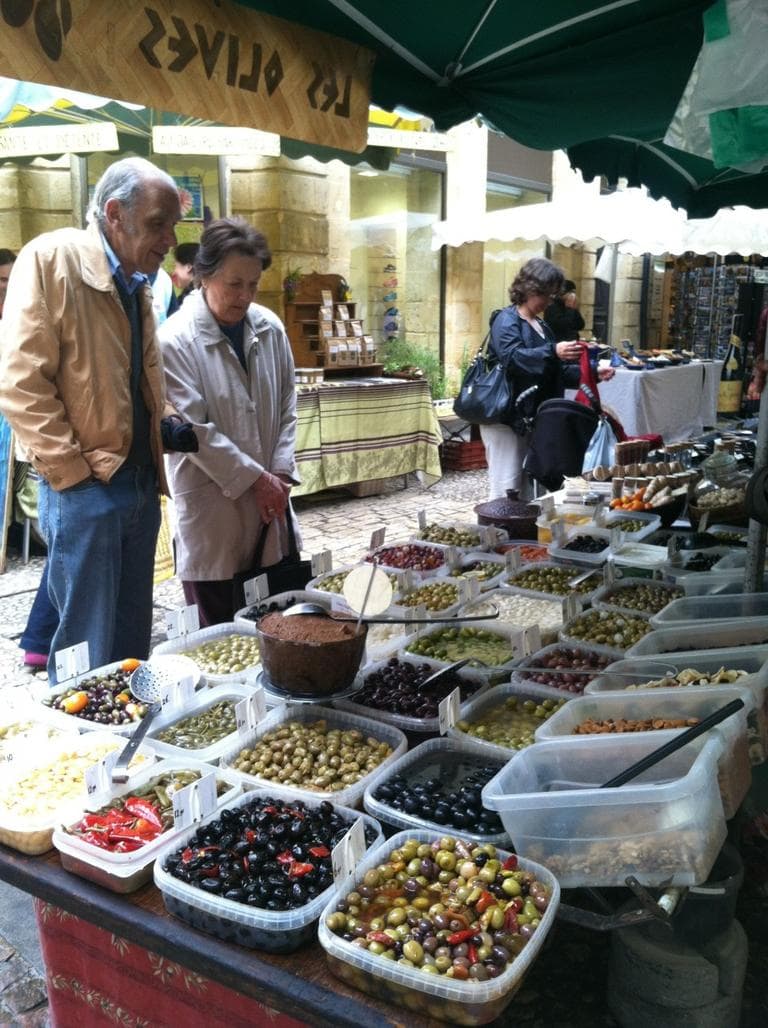Advertisement
How To Eat Well The French Way
I just returned from two weeks in a small village in southwestern France. Food, as you can imagine, was a big part of the experience: Croissants for breakfast, wine at lunch, wine at dinner, dessert twice a day, and the occasional visit to the local patisserie. I write not so much to admit my gluttony, but to share some shocking news: After a veritable two-week eating extravaganza, I arrived home three pounds lighter. Seriously? I kicked the scale, and stepped on it again. But it was irrefutable.
In eating the way French people do, I ended up losing weight. Talk about joie de vivre.
Volumes have been written about French women and how they eat whatever they want and remain thin and perpetually attractive. Most notably in Mireille Guiliano’s “French Women Don’t Get Fat,” the author writes about how French women eat bread and chocolate, and drink Champagne as part of “a balanced diet and lifestyle.”
But how do they do it? Here are my unscientific observations:
The No-Snack Zone:
The French eat three square meals a day. Even in big cities like Paris, restaurants are open during set mealtimes and only then. There aren’t endless convenience stores and snacking opportunities throughout the day. Yes, you can always find an open café, but grazing is rare.
In eating the way French people do, I ended up losing weight. Talk about <em>joie de vivre</em>.
Time Out:
At noon, throughout much of France, entire cities and villages shut down for lunch. A friend who lives in a small village tells a story of being in line at a grocery store with a cart full of food and being told, at 12:03 p.m.: “Pardon, Madame. Come back at 2. Fermé.”
The French are devoted to their lunchtime break. I imagine them eating heartily and slipping off for small liaisons, not to mention a nap. Around 2 — or often as late as 3 — in the afternoon, doors open, and commerce resumes. Imagine a shop in NYC or Boston closing down at noon and turning down a sale?
Midday Feast:
Unlike lunch in the U.S. (a sandwich at your desk, or a quick bite at a fast-food restaurant), lunch in France consists of a set-price, multi-course meal, accompanied by a glass or two (or three) of wine. Of course, many of these menus are designed for tourists, but in Paris I saw many groups of business colleagues dining together in the middle of the day for well over an hour. And, importantly, the midday meal is not eaten instead of dinner. It is, simply, lunch.

Watching All Shoppers:
Going to an open-air farmer’s market or strolling the aisles of the supermarché, I was fascinated watching French women (and men) shop for food. Americans, for the most part, grab vegetables wrapped in plastic and throw them in their cart. In France, there is sniffing, poking, and prolonged examination. Shoppers want to know specifics: How long has this cheese been aged? Where was this pork raised? When was this eggplant picked? There seems to be an intrinsic understanding and appreciation of ingredients that one doesn’t find among American shoppers. And informed shoppers make great cooks.
Move It!:
In almost every town and village we visited, there were well-marked bike lanes, hiking trails, public tennis courts, pools — not to mention kayaks and canoes for rent. Easy access to exercise means people can stay fit.
Back home now, I’m eating salads for lunch and steamed veggies for dinner. Gone from my diet are bread and croissants.
But what’s this? I’ve gained a pound since I returned from my two-week French eating extravaganza. Excuse me? Pardonnez-moi?
I took the dog for a long walk this morning. I found a new path and we were gone a bit longer than normal. Who knows, maybe I’ll have a glass of wine with lunch this afternoon?
Related:
This program aired on August 12, 2013. The audio for this program is not available.